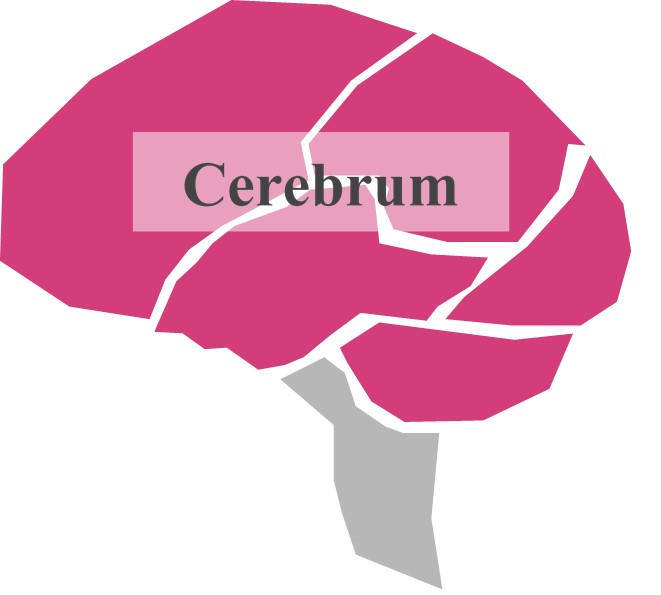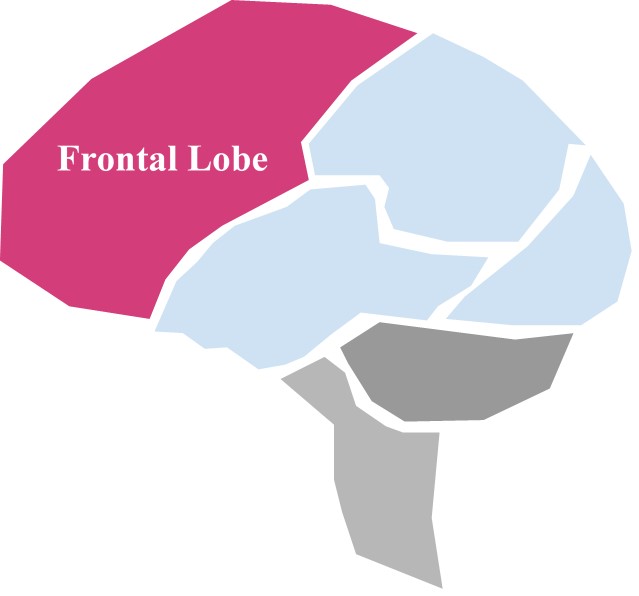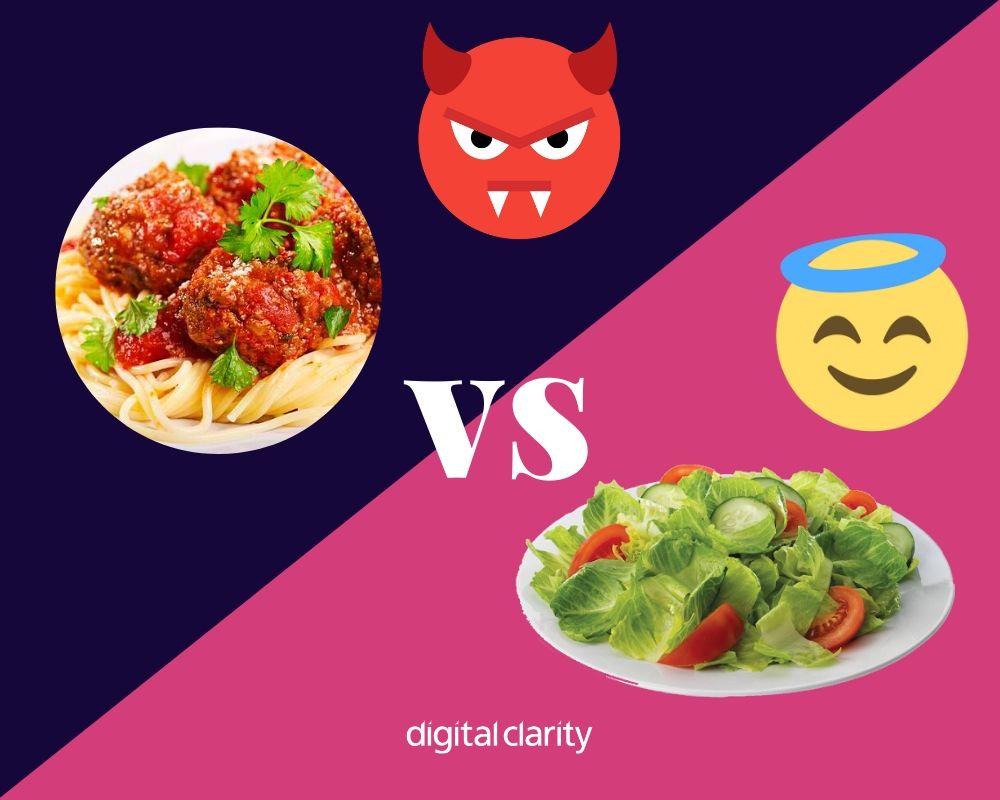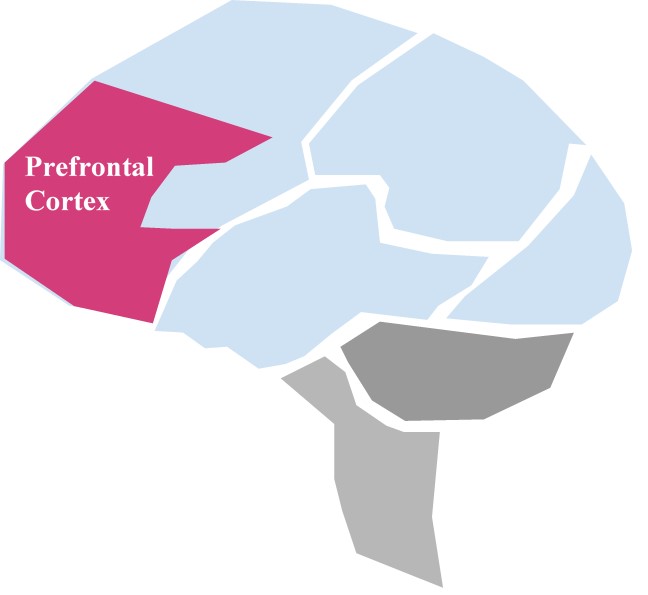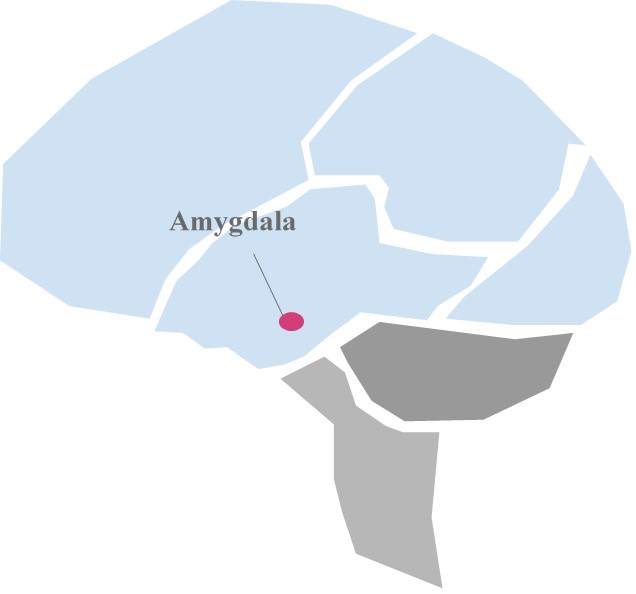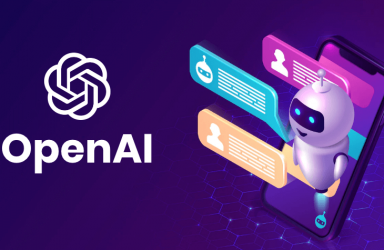What triggers someone to make a quick, snappy decision, while others more methodically mull over the decision and in some cases avoid making a decision at all?
If you are responsible for new business, sales, marketing or account management, all these roles are highly dependent on others making decisions. If we could just understand a little more about how and why people make decisions, then maybe we could understand how receptive they may be to what we have to offer. From there, we can tailor a more effective way to help them decide on us!
So let’s dive into the decision making brain!
The Cerebrum (AKA The biggest bit of the brain)
This is the largest part of the brain and is made up of two hemispheres, right and left. Confusing as it may be, the right hemisphere controls and processes signals from the left side of the body, while the left hemisphere controls and processes signals from the right side of the body.
As sales people or marketeers, we are interested in the part of the brain which helps prospects decide to become clients, or helps clients see the value in work we are doing, then deciding to increase budgets or bring new projects into the mix.
Let’s dive a little deeper!
The Frontal Lobe (AKA Feelings, movement and figures stuff out)
This is just one of 4 parts of the cerebrum and as it suggests it sits at the front of the brain. It takes control of senses, emotions, movement, personality, planning, reasoning and problem solving to name a few.
Decisions mainly comprise of the following:
- Assessment of the current situation / problem / proposal
- Emotive response, how someone feels about the situation or circumstance
- Reasoning based on past experiences, for example predicting what the likely outcome is based on past results
- Deciphering the most effective outcome for your needs
Making decisions is a complex mix of reactions, emotions, memories and reasoning. This can be why many of us struggle on a day to day to make commitments or decide on what to have for dinner.
If we take what seems like a simple decision like what to eat, we use all of the above:
Assessment
- I am hungry (this is triggered by other parts of the brain but let’s not go there yet)
- I need to eat
- Let me see what food I have in the fridge
Emotive response
- I really love spicy meatball pasta
- It makes me feel happy and comforted
Reasoning
- Last time I had spicy meatball pasta I really enjoyed it
- I could have salad but that reminds me of being on a diet!
Deciphering
- I should really have salad as it is more healthy and lower carbs, however I know I will feel hungry as soon as I eat it and therefore I want meatballs!
FINAL DECISION: Meatballs
Making decisions in business
If we take an example of a possible decision making process in business:
Assessment
- I need more sales, I need to improve my marketing strategy
Emotive response
- I feel I am not reaching the right audience currently
- It is frustrating as we have a really good service to offer clients
- I am concerned about finding the right partner for us to help improve our marketing
Reasoning
- All agencies I used before have let me down
- All agencies are untrustworthy and are just out for the money
- How can I find a partner who is right for our business?
Deciphering
- If I can get proof that the agency will deliver or can guarantee results then I will agree to the contract
- Unless someone addresses my concerns I don’t feel I can trust anyone and may as well do it inhouse
FINAL DECISION: After receiving 3 proposals and pitches – they take the project in-house.
The reasoning which led to this final decision was a lack of confidence in the proposals put forward. None had addressed the anxiety of making the wrong decision again – as in the past they had encountered a bad service.
Unless we understand the process and the reason people come to their conclusions we won’t ever truly address the barriers standing in the way.
In turn it will be a waste of time for all involved. Discover more pain points of an agency and client relationship.
Other factors which may impact the outcome of the decision making process may be:
The size or impact of the decision
Often larger decisions have not yet been encountered before and therefore we need to bring all decision making functions of the brain into play in order to figure out the “right” decision.
The timing
More urgent decisions can be rushed and less thought through. Sometimes the quick win overshadows the slow yet bigger win.
The influencers
You have heard the phrase too many cooks spoil the broth, meaning too many people involved in something can mean the outcome is worse than if just one or two people were in charge. Therefore when influencers have their own decision making process and reasoning, emotions etc.. this can impact the final decision maker to either take more caution than they normally would or in contrast, take more of a risk.
Knowing that this may be a hurdle upfront means that you can pre empt the outcome.
TIP: Understand who is involved in the decision making process and make it your business to get every member onside. Figure out the thought process for each of them.
YES – this does take time, and effort, and skill. You do want to win the business, or upsell your services don’t you? If not, stop reading now and have a nice day!
If you are serious about growing your business, winning more clients, gaining authority within your industry then keep reading.
The part of the brain that’s crucial in decision making is the prefrontal cortex.
Prefrontal Cortex (PFC) (AKA Predicting the future)
This lies at the very front of the brain and within the frontal lobe of the cerebrum.
This is the part of the brain used to differentiate and ultimately decide on outcomes. When we talk about making educated decisions, or having instinctive feelings about things, these are often based on our PFC.
It manages our process of internal reasoning and projecting what the potential consequence is, from actions which are being made now. Therefore it is believed to drive the decision making process.
This becomes very important when trying to educate a prospective client on our value proposition, or why we are the right choice over a competitor.
What is their internal reasoning? They may internally be asking:
What consequence is there of making the wrong decision?
We can address this upfront.
TIP: If you are selling software, you may raise that if your clients are not happy within the trial period they can cancel – hence the clients are losing nothing. The risk and consequence of making the decision is therefore reduced.
TIP: If you are offering a service, you could say that several clients you recently signed up were unsure if they were making the right decision. Confront it head on. Empathise that they are possibly concerned that they are making the right decision and that is ok, then explain that you are happy to help work through any concerns.
Making the right or wrong decisions doesn’t always come down to logic. In fact on a daily basis we all make decisions which are actually quite illogical but make us feel comfortable or play into our happy emotions.
Eating cake, smoking, drinking wine, beer, cider, all make us feel good in the short term but don’t actually help and actually can contribute to poor health in the long term. We still decide it is a good idea at the time.
Sometimes decisions are made based on what we think is right, or how we feel, rather than the logical result.
This is why marketing is often led by emotional messaging, why sales is all about buy-in to the person and the vision of what that product or service may make the buyer “feel” like. Luxury brands are all about the feel you have owning it, the perception of wearing that watch, handbag, jewellery, trainers, etc..
Therefore they are not logical purchases, but emotive ones.
Limbic system (AKA The thinking network)
A network of brain structures which contribute to emotion, learning, memory and behaviour. The key part we are interested in here is:
Amygdala (AKA Fight or Flight)
Although small, the Amygdala plays a central role in connecting emotions to memories and in turn these can be associated with our fears.
Fear plays an important part in the decision making process. We often put our own barriers up to prevent getting embarrassed, hurt or failing at something. Fear is both an emotional and physical response to danger.
Anxiety is a response to something which we perceive as dangerous. This doesn’t have to be a physical danger, it could be emotional and normally is. Anxiety can also often be based on irrational fears.
The amygdala sends signals of danger to other parts of the brain, and where anxiety is involved the danger may not be an actual threat.
Standing in front of a group of people to present is a classic example of the amygdala triggering a signal of danger for many of us. There is no real threat to us, we are not in danger, in fact in today’s society even the likelihood of being booed off the stage is very minimal. However many of us have an overriding fear.
It can be the same in making business decisions. If you make the “wrong” decision, what will people think, how will you cope, what impact will it have on the business?! All these thoughts may run through your brain, they may also hold more weight if you have previously experienced a similar situation and the outcome was emotional – either good emotional or bad emotional.
This means one person’s decision making process may be quite different to another.
In Conclusion
Now knowing all these layers of complexity, it is not surprising that decisions don’t always get made quickly, that delays often occur, and more questions are asked before the decision is made.
However, knowing now what we know about the brain (and I am no neurologist) but understanding just a little about how we process decisions may allow us to position our offering, our message, our products and services in a more receptive way that helps resonate with people in their individual decision making process.
At the end of the day we are all humans making decisions every minute of everyday with multiple stimuli, emotions, learnings and memories impacting those decisions. So where we can help people make easier decisions, then we should and we can.
For further brain reading see the sources here:
- https://www.neuroscientificallychallenged.com/
- https://www.psychologytoday.com/
- https://en.wikipedia.org/
- https://www.goodtherapy.org/
- https://www.igeaneuro.com/
- https://Forbes.com/sites/greatspeculations/2018/05/10/dont-let-your-hippocampus-stop-you-from-being-a-successful-investor/
For more information or to understand how we can help your business grow, contact us.
